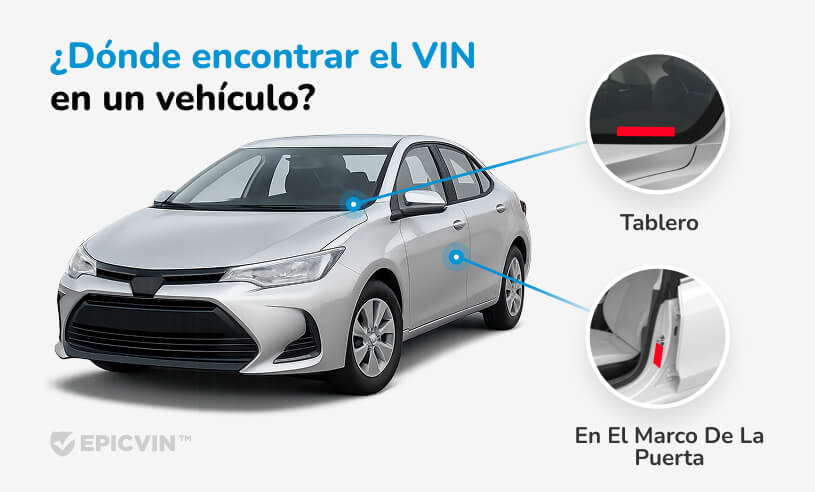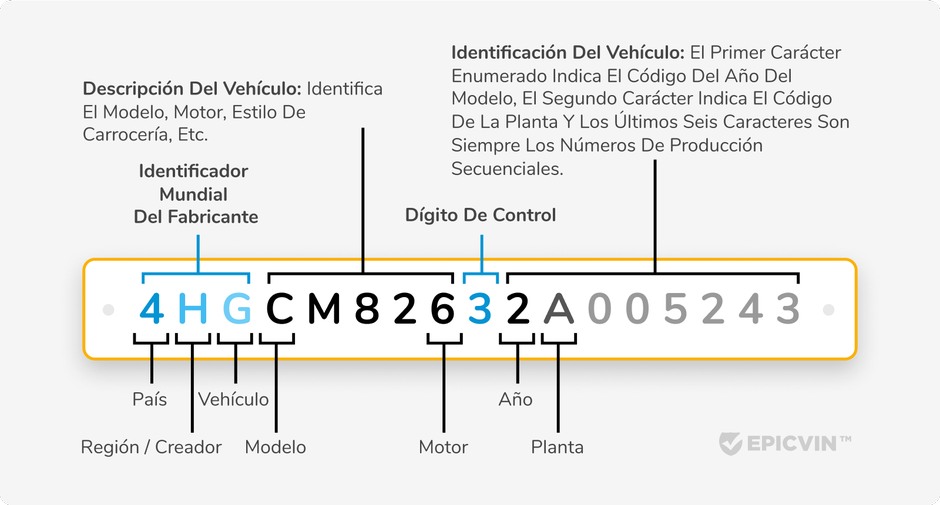
Decodificación del VIN
En este artículo, hemos descrito en detalle qué es el código VIN.

¡Decodificador de VIN Freightliner gratuito! 🚗 Consulta especificaciones, hoja de construcción, retiradas del mercado e historial básico - sin registro. 🛡️✅ ¿Necesitas accidentes, kilometraje, títulos? Actualízate con un clic.
Búsqueda del VIN
Aquí lo puedes encontrar:

El número VIN Freightliner se estandarizó en 1981 por el Instituto ISO. Este código único de 17 caracteres proporciona información esencial. Revela las especificaciones de tu camión, detalles de fabricación y recalls de seguridad. Nuestro VIN decoder Freightliner ayuda a los compradores a verificar la autenticidad y descubrir problemas potenciales antes de la compra mediante una consulta VIN Freightliner completa.
Freightliner VIN decoder provides instant access to crucial vehicle information through a simple process.

El número VIN Freightliner aparece en varios lugares estándar en los camiones Freightliner para fácil identificación y posterior verificar VIN gratis.
| Riesgo clave | Impacto en compradores | Pasos de mitigación |
|---|---|---|
| Riesgo de robo | En 2024, ~7% de camiones Freightliner Clase 8 se reportaron robados anualmente | Instalar rastreo GPS y alarmas |
| Recalls de seguridad sin reparar | ~15% tienen recalls abiertos: airbags/frenos aún activos | Siempre usar decodificador VIN Freightliner, verificar NHTSA |
| Depreciación con el tiempo | Los camiones Freightliner pierden ~25% de valor en los primeros 3 años | Comprar unidades de 2-3 años con bajo kilometraje |
| Fraude de retroceso de odómetro | Se estima que 2% de anuncios de camiones usados fueron alterados | Comparar kilometraje de DMV y subastas |
| Historial oculto de inundación o salvamento | 5% de camiones Freightliner subastados tienen títulos de salvamento no revelados | Usar la vista cronológica con fotos de EpicVIN |
Mitigación de riesgo: Realizar verificación mediante consulta VIN Freightliner para recalls abiertos. Verificar comparación de kilometraje en múltiples fuentes. Examinar documentos cronológicos con fotografías de apoyo para protegerte y revisar VIN gratis.
| Problema | Modelos afectados, síntomas, costo promedio de reparación |
|---|---|
| Falla de inyectores DD15 | Cascadia 2018-2022; ralentí irregular, humo a 200-300k mi; ~$5.000 |
| Falla del sensor del sistema DEF | Cascadia 2019-2023; luces de advertencia, modo limitado; ~$1.200 |
| Fuga de aceite del turbocompresor | M2/Cascadia 2015-2020; humo excesivo, pérdida de aceite; ~$3.500 |

Cada carácter en el número de serie Freightliner único de tu vehículo cuenta una historia específica. Nuestro decodificador de vin ayuda a identificar información crucial sobre cualquier vehículo específico.
Hay algunos otros detalles que los propietarios y compradores de Freightliner deben conocer para verificar VIN gratis:
Así es como nuestro decodificador VIN Freightliner interpreta una secuencia de ejemplo (1FUWDZYB7YPG60253):
| Símbolos | Ejemplo | Lo que revela |
|---|---|---|
| 1 | 1 | Estados Unidos como país de origen |
| 2 | F | Freightliner como fabricante |
| 3 | U | Tipo de vehículo camión pesado |
| 4-8 | WDZYB | Configuración del chasis, tipo de motor, clase GVWR, serie del modelo y estilo de cabina |
| 9 | 7 | Dígito de verificación para validación |
| 10 | Y | Designación del año modelo 2000 |
| 11 | P | Ubicación de planta de ensamblaje Portland |
| 12-17 | G60253 | Número de serie individual del vehículo |
Año 2000
Marca Freightliner
Modelo FL60
Tipo de combustible
Motor CFE/3126
Hecho en USA
Nuestra consulta VIN Freightliner integral revela detalles extensos del vehículo más allá de las especificaciones básicas y ayuda a identificar el historial del vehículo mediante nuestro decodificador de VIN.
Nuestro archivo cronológico con fotos revela problemas ocultos como daños por inundación antes de que hagas una oferta.— Alex Black, CMO, EpicVIN
Verifica el VIN de Freightliner del vehículo en el marco de la puerta del conductor, tablero a través del parabrisas, o riel del chasis del compartimento del motor.
La posición 7 típicamente indica configuración de cabina, incluyendo dimensiones del dormitorio y especificaciones de altura del techo para modelos de camiones pesados. Usa nuestro decodificador de vin para más detalles.
La estructura básica permanece idéntica, pero las posiciones 4-8 contienen códigos especializados de chasis para aplicaciones vocacionales y de especialidad. Consulta nuestro decodificador VIN Freightliner para detalles específicos.
Sí, códigos específicos de motor y transmisión identifican configuraciones de kit planeador versus vehículos completamente ensamblados en fábrica a través de nuestro servicio de consulta VIN Freightliner y revisar VIN gratis.
La letra "P" en posición 11 del número VIN Freightliner identifica producción de planta de ensamblaje Portland para la mayoría de modelos Freightliner y variantes de modelos populares.
La posición 6 típicamente contiene especificaciones de chasis, incluyendo dimensiones del riel del marco y calificaciones de capacidad estructural para camiones y furgonetas Freightliner. Nuestro decodificador de VIN proporciona esta información.
El código de destino de mercado en la sección VIS del número de serie Freightliner indica modelos de exportación configurados para países de manejo por la derecha. Nuestro decodificador VIN Freightliner ayuda a identificar estas variaciones.
Los VIN de Freightliner modernos incluyen código de equipo de seguridad que identifica instalaciones de sistemas de evitación y mitigación de colisión en modelos de vehículos.
Los estándares VIN evolucionaron con el tiempo, con códigos avanzados de seguridad y emisiones agregados conforme cambiaron las regulaciones. La confiabilidad de documentación de vehículos más antiguos puede variar según registros de la empresa.
La sección VDS contiene datos de configuración de chasis que pueden identificar mediciones de distancia entre ejes para aplicaciones específicas del modelo. Busca en nuestra base de datos para verificar VIN gratis y decodificar esta información sobre especificaciones de chasis de cualquier auto o camión.
Descubra consejos de expertos, sugerencias y noticias sobre la compra y el mantenimiento de vehículos usados.

En este artículo, hemos descrito en detalle qué es el código VIN.

Nuestro equipo le informará sobre la negociación con un nuevo concesionario de...

Vea cómo averiguar cuáles son las mejores métricas para comparar automóviles